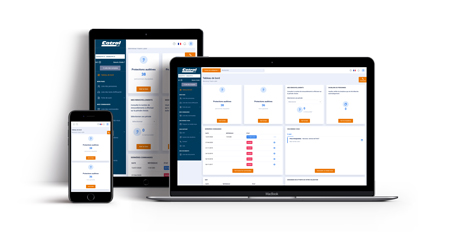It is impossible today to ignore the fact that prolonged exposure to a noisy environment above 80 dB (A) is dangerous for the hearing health of your employees. In view of this, several solutions exist such as the reduction of noise at source or the provision of personal protection equipment (disposable plugs, moulded ear plugs, headphones, etc.).
The goal is to avoid finding yourself in dangerous situations, like those presented in the video below:
https://www.youtube.com/watch?v=LEglK1sWflE
In order to protect efficiently against noise risks, the process must be done in two parts:
- Your staff must be aware of the dangers of noise and understand best practice in order to protect themselves.
- You must choose the IHPD that is best adapted.
Choosing the best IHPD is not as simple as it sounds. Not all solutions are the same and there are numerous ideas circulating regarding hearing protection. During the "5 received ideas on hearing protection" webinar, our noise risk expert will come back to these issues.
Fighting ideas about hearing protection
Disposable ear plugs protect efficiently against noise
The disposable ear plug is the most used IHPD. Its unit cost is low (about 10 cents), its theoretical attenuation is high (about 30 dB (A)) and its implementation is easy. At least it appears that way.
If attenuated by 30 dB (A) when properly positioned, the disposable ear plug will only attenuate 10 dB (A) if not properly positioned. Contrary to what we think, this is not easy. Insufficiently inserted, not sufficiently rolled to inflate and block the ear canal, not adapted to the size of the duct ... the disposable cap will come out and the employee is not properly protected.

The more the protection attenuates, the more efficient it is
In a situation where your employees are exposed to different intensities of noise according to their job, it would be easy to think that the best way to protect everyone is to choose the protection with the highest attenuation according to the rule "what does most can do the least".
When properly positioned, a disposable ear plug attenuates by 30 dB (A). This level of attenuation is acceptable when the sound environment is greater than or equal to 95 dB (A), but may lead to overprotection for lower noise levels.
Overprotection signifies that sounds are over-reduced , causing your employees to become isolated. Two risks are created by this situation:
- If your employees are cut off from the surrounding world it is difficult to hear alarm signals. They are incapable of reacting to dangers.
- If your employees need to communicate then they are obliged to take off their protection, so putting their hearing health in danger.
EN-458 standard recommends that the residual level perceived under the protector is greater than 70 dB (A), although a level up to 65 dB (A) is considered acceptable.

It is therefore vital to understand the levels of noise that your employees are exposed to before choosing the best means to protect their hearing.
We can't communicate without removing our hearing protection
As you can see in the video below, your employees must wear their protection 100% of the time they are exposed to noise to avoid putting their hearing at risk. It only takes a short exposure to noise unprotected to reduce their effectiveness.
According to INRS:
- If an IHPD is not worn for 2 minutes, it loses 25% of its effectiveness.
- If an IHPD is not worn for 2 hours, it loses 75% of its effectiveness.
Given these facts, should your employees remove their protection or leave their posts in order to communicate? Depending on the PICB selected, not necessarily either.
 |
 |
 |
 |
|---|---|---|---|
|
|
|
|
|
By using protection with a uniform response filter, which attenuates the intensity on all sound frequencies, they will be able to communicate and hear alarms without removing their protection.
Providing IHPDs complies with the law
The requirements of the regulations differ according to the noise levels that your employees are exposed to:
- When the intensities exceed 80 dB (A) or 135 dB (C): the provision of hearing protection is mandatory.
- When the intensities exceed 85dB (A) or 137 dB (C): the use of hearing protection is mandatory.
- When the intensities reach 87 d (B) or 140 dB (C) taking into account the attenuation of the IHPD: this is the maximum tolerated threshold, not to be exceeded.
In 2 of the 3 cases presented, providing hearing protection is not enough to respect the law. You must make sure that your employees wear their IHPD 100% of the time spent in noise.
Custom hearing protections are more expensive than disposable ones
When compared to the unit purchase price, it is obvious that a disposable ear plug is cheaper than a moulded ear plug or any other type ofIHPD. On the other hand, when we compare this unit price to the duration of effectiveness of the protection,conventional wisdom has its limitations.
 |
 |
|
|---|---|---|
| Type of protector | Custon made hearing protection | Disposable ear plugs |
| Unit cost before tax | 150 € | 0,10 € |
| Effective duration | 6 years | 1/2 day |
| Total cost before tax over 6 years | 150 € | 300 € |
For one-off use the disposable cap is the most economical solution. On the other hand, as soon as your employees require to be constantly protected from noise, buying custom hearing protectors can save money in the long term.



